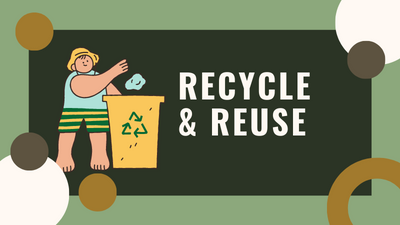Want to know more about World Environment Day? Here’s a crossword that will help. Go on, try it.

World Environment day is on June 5 every year. A day to understand why we need to be careful about what we do to protect the world we live in. Now here’s a crossword themed around this special day. How many of these clues can you answer?
A word game centred around cooking. Can you find the right word?

What’s the one thing you need when cooking? Its an eight-letter word that is required to ensure your food tastes good. Go ahead, take a guess.
As a 16-year-old scuba diver, he decided that he would work towards removing plastic from the oceans. Read on to know more about Boyan Slat and his mission to clean our waters.
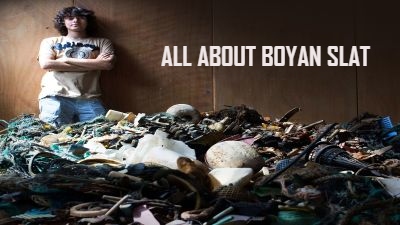
Many people, globally, have done much to nip plastic pollution in the bud. Boyan Slat is one of them. Read on to know more about him.
Some tips to ensure that you exercise right and stay healthy in the summer.

Summer doesn’t mean you completely give up on your health. Ensuring you stay healthy is a requisite and for that, exercising is important. However, there are a few things to be kept in mind while exercising, in the summer. Check out the quiz below and choose the correct answer to see how many of these important tips you are already aware of.
What’s a preposition? Find out with this grammar activity.

According to the Cambridge Dictionary, a preposition is defined as a ‘word that connects a noun, a noun phrase or a pronoun to another word, especially to a verb, another noun or an adjective.
Prepositions indicate relationships between other words in a sentence. Many prepositions tell you where something is or when something happened. Most prepositions have several definitions, so their meaning depends quite a bit on context. Ending a sentence with a preposition is not a grammatical error. Some examples of prepositions are in, at, on, of, and to.
Now try your hand at this activity to see how well you know your prepositions.
Kite flying has been a tradition in many parts of India but it is also dangerous to birds and humans due to the use of manja. Read on to know more and also try to solve the picture puzzles.

Kite flying is synonymous with many festivals and celebrations. In Gujarat, ‘kai po che’ (‘I have cut the kite’) is a popular shout from the rooftops and was also a title for a hit Bollywood film.
It is widely believed that kites first became popular in China around 3,000 years ago as materials for kite building such as silk fabric for the sail; fine, high-tensile strength silk for the flying line; and resilient bamboo for a strong and lightweight framework were readily available. Not surprisingly, the kite migrated to different parts of the world and one ancient design — the fighter kite, a small flat diamond-shaped one made of paper with a tapered bamboo spine and a balanced bow — became popular throughout Asia.
In competitions, the kites are flown without tails as they would hinder their agility. Instead, the cutting line, traditionally called manja, is coated with an abrasive substance that would cut the opponent’s line. For more than 2000 years, the manja was made of fine pure cotton thread coated with a mixture of rice glue, tree gums and similar natural ingredients and finely powdered glass. In some places, individuals had their own personal ‘secret’ recipes but most were made by a specialist craftsman on a large scale.
Today, kites are often flown with a so-called “chemical” or “Chinese” manja. It is locally manufactured but is called “Chinese manja” because the main ingredient (synthetic polypropylene) comes from China. Coated with fine metal dust, it costs just one-third of a cotton spool. While the traditional manja was dangerous enough, the synthetic one is more so as it is harder to break due to its metallic nature.
Apart from being a threat to humans (motorcyclists and others have had their throats cut by the manja), this thread is extremely dangerous to birds. Often, it lands in trees and forms a nearly invisible mesh. When birds get tangled in this net, they cut themselves grievously in their efforts to escape.
All this led to calls for a ban on the sale of both kinds of manja but that has not really worked. Organisations that work on this issue have been trying their best to create awareness, including fighting in the court and working with law enforcement agencies. One effort that has worked has been to involve citizens including children in clearing out the entangled manja from their society/ school/ colony.
Kite flying is fun but should not come at a cost to the environment. With World Environment Day around the corner, let us switch to using simple cotton threads that come in a variety of lovely colours.
Give a new lease of life to an object that would other wise harm the environment: the plastic bottle!
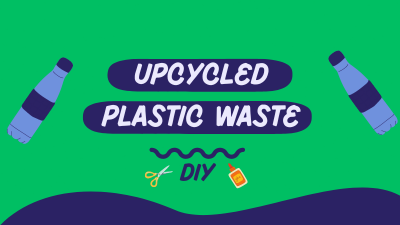
Self-watering planter
It’s summer and the heat makes us thirsty all the time! And that’s true for plants as well. Summer is when we plan our vacations? Who will water our plants then? Sometimes, in our zeal, we tend to over-water them, which is also not good for the plants. Self-watering planters are a great way to keep your plants healthy and hydrated, even when you’re away.
They work by storing water in a reservoir, which is then drawn up through the string and into the potting soil. The water then travels through the soil to the plant’s roots, where it is absorbed. The water level in the reservoir will slowly decrease, as the plant uses it up. When the water level gets low, you will need to refill the reservoir.
Follow these steps to make your own upcycled planter!
A cool craft idea for the hot summer days!
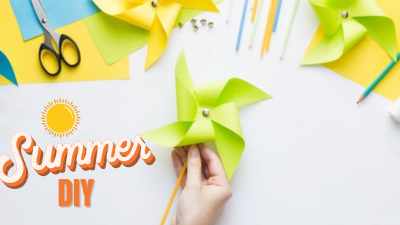
Let your imagination and time fly as you try your hand at this simple paper craft that is perfect for the summer!
Materials required:
1. Square sheet of paper
2. Pushpin
3. Straw/dowel
4. Ruler
5. Pencil
6. Scissors
7. Glue
Photos: iStock/ GettyImages
Indiscriminate use of plastics and the emissions of the oil and gas industry are killing our oceans.
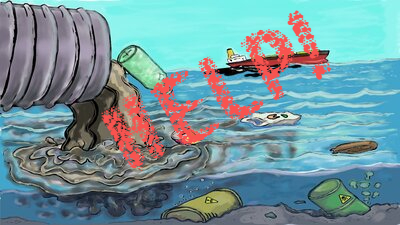
The oceans are the earth’s most valuable natural resource. They cover more than 70% of the earth’s surface. They govern the weather, clean the air, help feed the world, and provide a living for millions. They also are home to most of the life on earth, from microscopic algae to the blue whale, the largest animal on the planet.
However, we humans, are polluting them with plastics, carbon emissions, leaking oil and noise. Slowly, but surely, we are killing our oceans.
Read these cards to learn more about it.
Laern about watse sorting and recycling with this downloadable puzzle.
